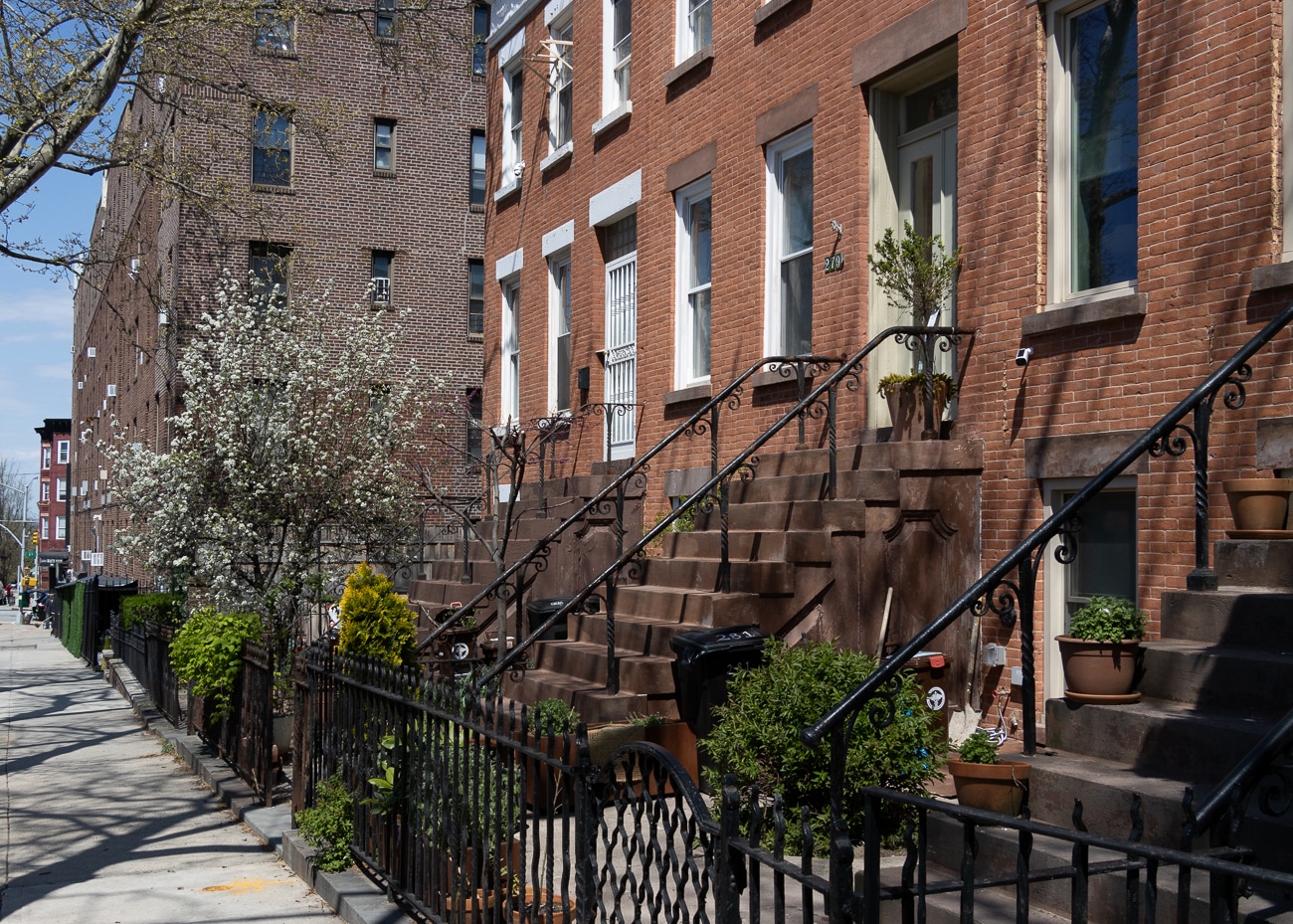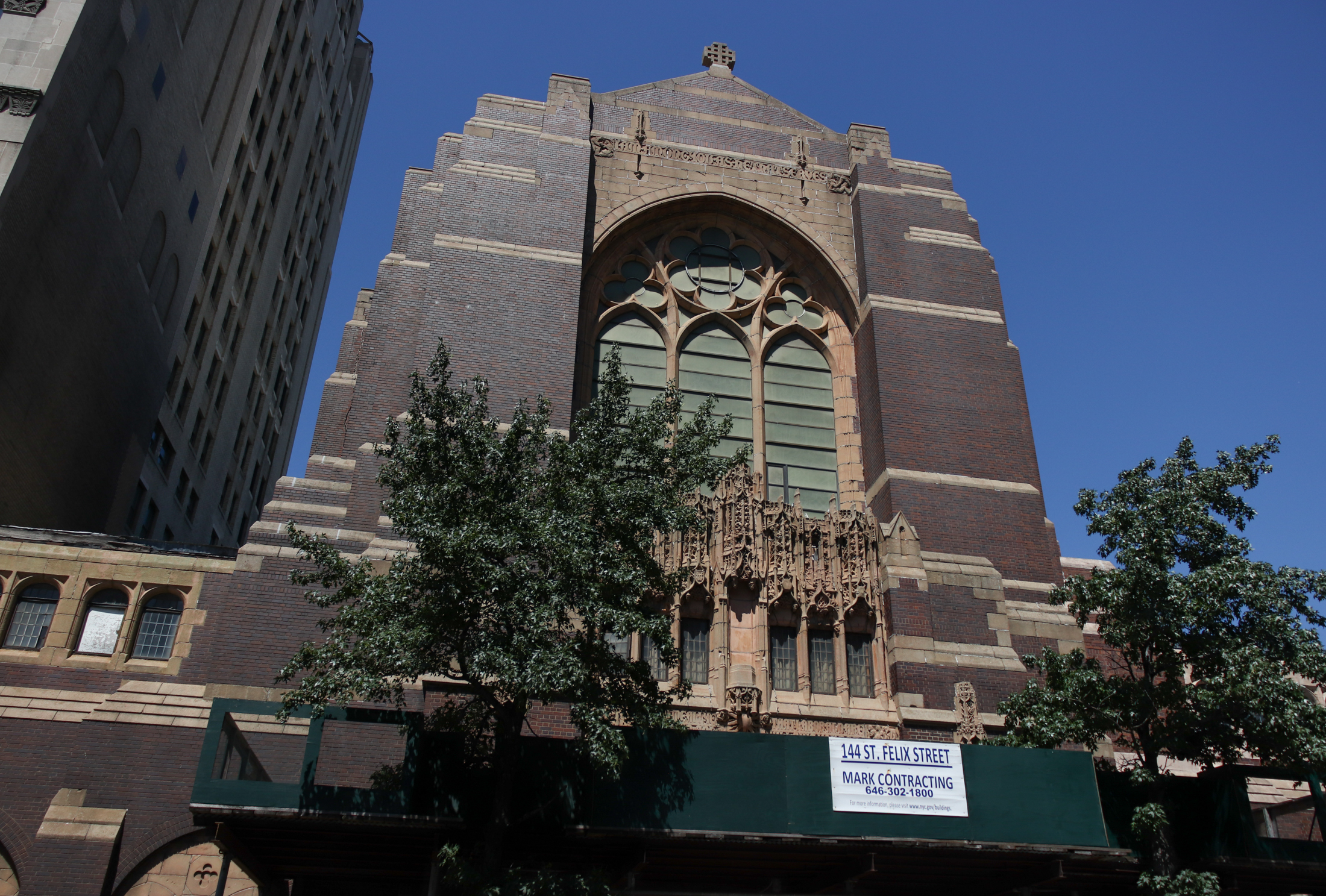Building of the Day: 38 Lafayette Avenue
Brooklyn, one building at a time. Name: Originally Boyertown Burial Casket Company, now Hanson Place SDA School Address: 38 Lafayette Avenue Cross Streets: Corner St. Felix Place Neighborhood: Fort Greene Year Built: 1921-1922 Architectural Style: Renaissance Revival Architect: Emile G. Perrot Other works by architect: Fordham University Library, Bronx; churches, convents, schools, factories, private homes…

Brooklyn, one building at a time.
Name: Originally Boyertown Burial Casket Company, now Hanson Place SDA School
Address: 38 Lafayette Avenue
Cross Streets: Corner St. Felix Place
Neighborhood: Fort Greene
Year Built: 1921-1922
Architectural Style: Renaissance Revival
Architect: Emile G. Perrot
Other works by architect: Fordham University Library, Bronx; churches, convents, schools, factories, private homes and other buildings in Philadelphia, Bucks County, and other locations in Pennsylvania.
Landmarked: Yes, part of Brooklyn Academy of Music Historic District (1978)
The story: This corner of St. Felix Place and Lafayette Avenue was home to three brownstone houses, prior to 1921. They were typical of the houses on this block, which range in width from 15 to 25 feet wide, going to show the history of the development of this block, and Fort Greene in general. They were probably built before the Civil War. The houses on this site were 16 x85 feet, and when they were torn down, the New York Evening Post announced, “Three old buildings will be demolished to make way for the improvement.” That improvement was the new factory, showroom and funeral chapels of the Boyertown Burial Casket Company. Boyertown Casket, which got corrupted very quickly in Brooklyn to “Boyerton” was a venerable casket company out of Pennsylvania. They started making caskets in the 1880s, and soon grew to be one of, if not the largest casket companies in the United States.
They had factories and showrooms all over the country, including one in Manhattan, which in 1917, was located on the corner of 43rd and 8th Avenue. They stayed there until they sold their building in 1929. It was then torn down as part of the construction of the 8th Avenue subway. Everyone got planted in a Boyertown casket, and when escape artist Rahman Bey, “the Egyptian Miracle Man” wanted to escape from a casket that was welded shut and tossed in the water, in 1926, he chose among several Boyertown models. He’s probably buried in one now.
The company had Philadelphia-based architect Emile George Perrot design the building. He had a successful career as both an engineer and an architect, and worked mostly in Pennsylvania, especially in the Philadelphia area, but here in New York City, had designed the library, and the transept of the Chapel for Fordham University, in the Bronx. Most of his work was in some way connected to the Catholic Church, and in addition to private houses and some factories, the bulk of his buildings are churches, schools, and convents.
The new Boyertown Burial Casket Company building on Lafayette Avenue was six stories tall, and from the outside presented a very staid, solemnity, blending in and not competing with the new YMCA headquarters, as well as other new buildings nearby, as well as the Brooklyn Academy of Music, just across the street. The large 20,400 square foot building had funeral chapels and a casket showroom on the first two floors, and the remainder of the space was warehouse and factory space, as well as offices.
From over 1000 entries I found in Brooklyn’s newspapers, the chapels were doing great business, but it was hard to figure out how they operated. They were called simultaneously, “the Chapels,” “Boyerton Chapels,” and “Lafayette Avenue Chapels,” between 1923 and 1954. Ads for the funeral chapels were run by Jere J. Cronin, Inc., a company that had funeral chapels here and at 115 Atlantic Avenue, which was in the Heights, near Henry Street. Most of the Boyerton Chapel clients over the years were Catholic, from churches all over Brooklyn, with loved ones buried in Catholic cemeteries here and in Queens and Long Island. They did a brisk business.
It must have all ended in the mid-1950s, though, as the ads and the funeral announcements abruptly stop. I don’t know what happened to the building between then and 1974, when the Boyertown Burial Casket Company sold the building to the Hanson Place Seventh Day Adventist Church. The Boyertown Burial Casket Company closed its doors for good at its Pennsylvania headquarters in the late 1980s. Its former workers still have reunions in Philadelphia.
In 1974, architect Henry Wolinsky transformed the interior of the building into a school and a day care center for the SDA Church’s school, which had grown tremendously from fifty students when the school started at the church in 1964. In 2004, when the Williamsburg Savings Bank was being transformed into condos, there were rumors that this building would also become condos, but that has not happened. From the records, however, it does appear that the City now owns the building. It was landmarked in 1978, as part of the Brooklyn Academy of Music Historic District, which includes this entire block of St. Felix, as well as BAM and surrounding buildings. GMAP
(Photo: Christopher Bride for PropertyShark, 2012)











What's Your Take? Leave a Comment